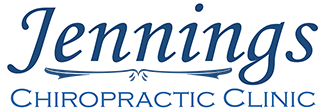The human body is an intricate structure made for motion – even at its very foundation. With individual cells in constant motion, blood is circulating in and out of a beating heart and lungs filling with oxygen. Each link in this chain of human life depends in some way on the others; if any doesn’t function properly, the body’s total health suffers.
One important – and often overlooked – key to man’s well-being is assuring there’s movement in the spine. This is the reason for intersegemental traction therapy.
What is intersegmental traction therapy? Quite simply, this is a therapy which, by mechanical means, uses three rotation rollers to compress and massage the spine, flexing and extending each of its joints to strengthen the muscles and ligaments thus, increasing the mobility of the spinal segments.
The Restoration of Functional Movement
 Today, more and more Doctors of Chiropractic are realizing the importance of maintaining the spine’s mobility, that one of the most beneficial results of manipulating the spine is the restoration of functional movement. Vertebral subluxation (fixation) is a major interference to the spine’s nerve system which can cause further problems – as serious as accelerated aging.
Today, more and more Doctors of Chiropractic are realizing the importance of maintaining the spine’s mobility, that one of the most beneficial results of manipulating the spine is the restoration of functional movement. Vertebral subluxation (fixation) is a major interference to the spine’s nerve system which can cause further problems – as serious as accelerated aging.
When a vertebra stays out of its normal position for any length of time, joints lock, ligaments and muscles harden, and finally, the joints fuse.
According to Dr. J. M. Mazion, “This is when complete spinal manipulation is indicated; and one of the few methods of providing full bi-lateral spinal therapy is intersegmental traction therapy.” For this, roller pressure is applied longitudinally along a 17-inch travel path which automatically reverses every 70 seconds.
Reshaping and Restoring the Spine’s Four Natural Curves
Quite often, the Doctor of Chiropractic finds that the spine’s four natural curve areas have been impaired, which lowers the body’s cushioning effect against daily trauma. In time, this can mean an immobilized spine.
As in cases in which full spinal manipulation is indicated, intersegmental traction therapy can be an invaluable part of the solution. In such cases, however, the roller action must be concentrated in smaller portions of the spine.


